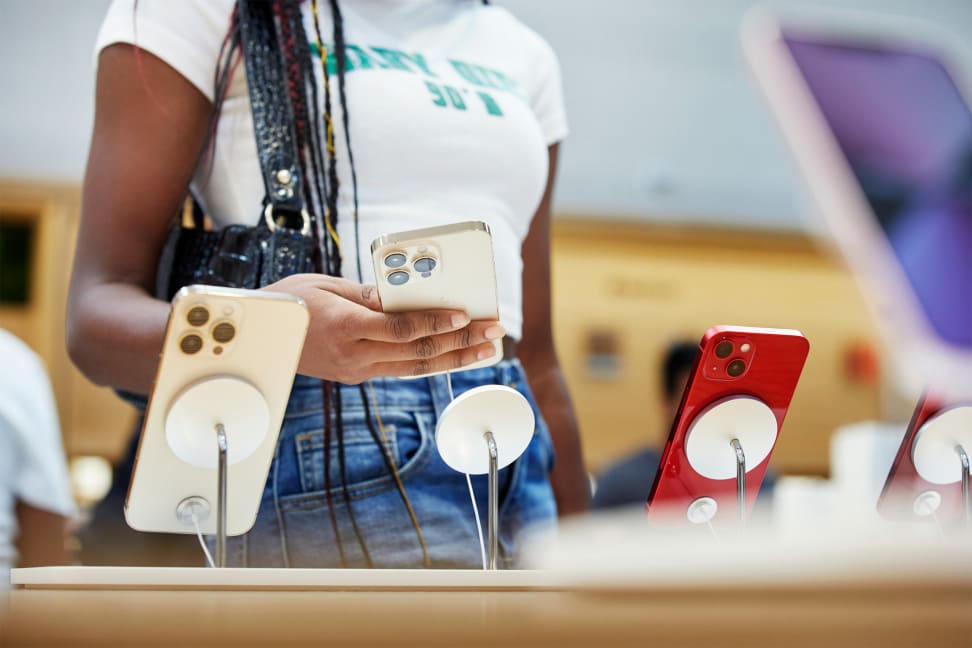Here's how to prepare for the upcoming 3G shutdown
Your 3G device won't be able to make phone calls in 2022
 Credit:
Apple
Credit:
Apple
Products are chosen independently by our editors. Purchases made through our links may earn us a commission.
Finding out your cell phone is about to become an obsolete chunk of junk can be stressful—especially if you’ve used the same device for several years. You have to go through the hassle of finding another phone, not to mention coming up with the money to pay for it.
Like it or not, AT&T, Verizon, and T-Mobile have planned to shut down their 3G networks for some time now, and the process now has an official timeline. That means phones relying on these networks will stop working, so it’s better to get a head start on shopping for a new phone now rather than waiting until your device goes offline. (It's also a good time to brush up on how to transfer data between your old phone and new phone.)
Here’s what you need to know about the 3G shutdown timeline and whether you’ll be affected.
When will carriers shut down their 3G networks?
According to the FCC, mobile carriers will start phasing out their 3G service as early as January 1, 2022, although those plans may be subject to change at any time. To stay up to date, it’s best to check your carrier’s website for details, but as of now, here’s what’s been announced:
AT&T will shut down its 3G network by February 2022.
Verizon will shut down its 3G network by December 31, 2022.
T-Mobile will shut down Sprint's 3G network by January 1, 2022, and Sprint's LTE network by June 30, 2022. T-Mobile will shut down its own 3G network by July 1, 2022, but it hasn’t decided on when it will retire its older 2G network.
The shutdown will affect Boost, Metro, Xfinity Mobile, Straight Talk, and other third-party carriers like Lifeline mobile service providers that use these networks. Customers whose phones run on a 4G or 4G LTE network that doesn’t support HD Voice (Non-VoLTE) will also be affected.
The 3G shutdown will also affect some tablets, smartwatches, laptops, and other devices like vehicle SOS services, home security systems—even ankle monitors—that rely on 3G.
Why are they shutting down 3G service?
Technology fades into obsolescence over time, and 3G is no exception. For mobile carriers to continue their roll-out of 5G services they need to make room for the new stuff—that stuff being cell towers and other equipment that sends signals to your phone so you can call your mom to wish her a happy birthday.
Unfortunately, that means older services will be discontinued in favor of giving customers the latest and greatest. With 3G services ending, mobile carriers can focus on expanding 5G to more locations across the country. Repurposing existing equipment is not only more cost-effective, but it should help 5G roll out faster in general.
How do I know if I will be affected?
Each major mobile carrier has provided a general list of unaffected devices on its website, so it’s a good idea to take a look at those lists and see if your device makes the list. We’ve provided an overview below of which smartphones and other devices are safe, but we still highly recommend checking your carrier’s website since the shutdown could affect specific models of some phones. (For example, the Samsung Galaxy S4 Mini will still work on AT&T’s network, but other Galaxy S4 models will not.)
Generally speaking, if you have any one of these devices on any of those major three networks, the 3G shutdown will not affect you:
Phones
- Apple iPhone 6 and newer
- Google Pixel 2 and newer
- Microsoft Surface Duo and newer
- OnePlus 6T and newer
- OnePlus Nord N100 and newer
- Samsung Galaxy A01 and newer
- Samsung Galaxy Express 3 and newer
- Samsung Galaxy Note4 and newer
- Samsung Galaxy S5 and newer
- Samsung Galaxy Z Fold and newer
- Samsung Galaxy Z Flip and newer
Tablets
- Apple iPad Mini 1st edition and newer
- Apple iPad 3 and newer
- Microsoft Surface 3
- Samsung Galaxy Book 2
- Samsung Galaxy Tab 3 7.0
Smartwatches
- Apple Watch Series 3 and newer
- Samsung Galaxy Watch Active 2 and newer
If you’ve looked at that list and checked your provider’s website and you’re still unsure if your device will work in the new year, your best bet is to call your mobile carrier’s customer service. The same goes for older security and SOS systems.
What if I’m enrolled in the Lifeline program?
If you are enrolled in the FCC's Lifeline program or are eligible for it, you should be able to receive assistance to obtain a new phone. The Lifeline program makes mobile and internet services more affordable for low-income individuals and families, and that includes lowering the cost of a new cell phone. The FCC has also waived certain documentation requirements for those who live on Tribal lands due to the Covid-19 pandemic until December 31, 2021.
Additionally, the FCC's Emergency Broadband Benefit Program provides eligible households up to $50 a month for broadband service. (Up to $75 a month if you live on Tribal lands.) You can also get up to $100 to buy a laptop, desktop, or tablet from participating providers, but you have to contribute more than $10 and less than $50 toward the purchase price.


